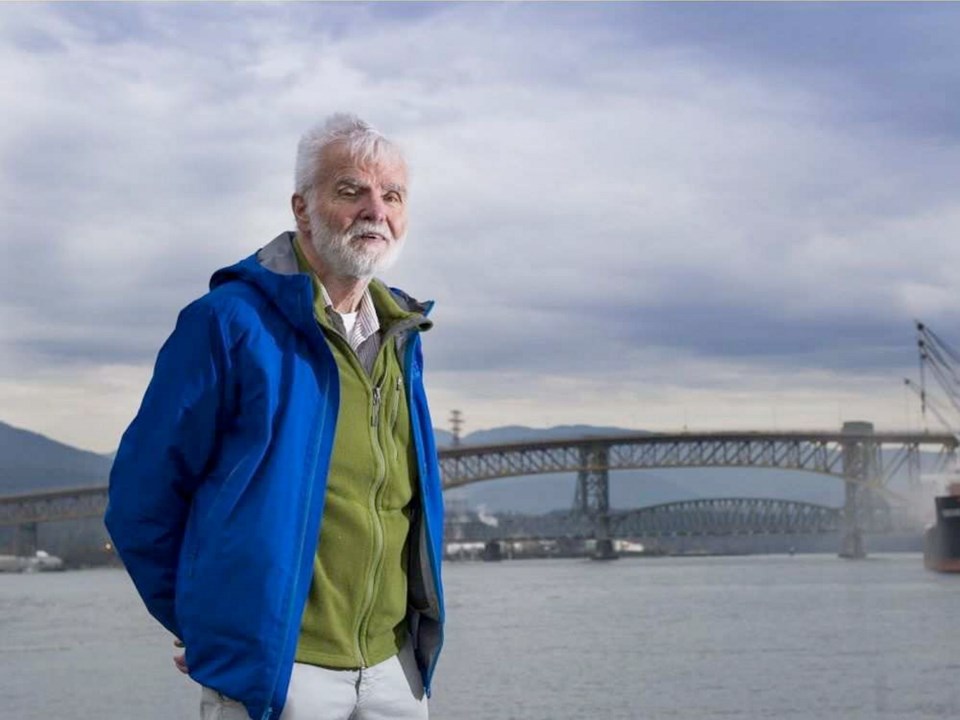Could a large ship hit and damage one of Burrard Inlet’s vital bridges? The possibility is being studied by the province because 40,000 oil tanker trips are scheduled through Vancouver Harbour in the next 50 years.
Dirk Nyland, chief engineer at the B.C. Ministry of Transportation and Infrastructure, said the strength of the piers of the Second Narrows (Ironworkers Memorial) and Lions Gate bridges will be examined in relation to a federal code which governs the structural integrity with regards to hits by marine vessels.
The review, which has only recently come to light, began in the spring of 2015.
“The Ironworkers Memorial and Lions Gate bridges have operated safely since being opened in 1938 and 1960, respectively, and the ministry is taking action so they continue to operate safely in the future,” said Nyland in an email.
“Given the changes to vessel usage in Burrard Inlet over time, we are in the midst of undertaking a review of the vessel impact protection for both of these structures,” he said.
The Second Narrows and Lions Gate are critical pieces of Metro Vancouver’s economic well-being, connecting people, goods and services to the North Shore with around 182,000 trips a day.
Brian Gunn, spokesman for Concerned Professional Engineers of B.C., said the province is assessing the bridges under a federal law called the Canadian Highway Bridge Design Code S6-14, which analyzes collisions and ways to mitigate them.
“The code gives engineers guidelines to know what impact forces the foundations can withstand. It’s very important,” he said.
Gunn said impacts from ships were incorporated into the design of new bridges like the Golden Ears and Port Mann, but not for older ones in Vancouver Harbour, where numbers and sizes of vessels have increased dramatically over the decades.
“A proper risk analysis has to be done if you’re building new bridges, but it doesn’t retroactively apply to old bridges,” he said.
“One of the oversights of this (Trans Mountain) pipeline project is the lack of a fully fledged risk assessment for the bridges.”
The south pier of the Lions Gate was beefed up about 20 years ago with tonnes of reinforced concrete and energy-absorbing buffers to improve its impact resistance, said Gunn.
“The idea is to build a much bigger foundation and have big, big buffers so a ship would glance off it into the middle of the channel,” he said.
Marine safety expert Joe Spears of the Horseshoe Bay Marine Group said it’s important to look at safety “with fresh eyes” because there are usually ways to improve protection for people and property.
“The North Shore bridges are part of Canada’s critical infrastructure, so we need to deal with this in a holistic fashion and look at every aspect. Organizations shouldn’t be afraid to talk. That’s good ocean governance,” he said.
The federal government approved the tripling in size of Kinder Morgan’s oil pipeline from Edmonton to Burnaby last year. The company said 408 tankers per year will transit the harbour over the 50-year lifespan of the project, passing under three bridges — the Lions Gate and Ironworkers, which are provincially maintained, and a railway span owned by Canadian National, 110 metres from the Ironworkers.
The channel is narrowest under the railway bridge at only 120 metres wide. Aframax-sized tankers, with the capacity to carry up to 120,000 metric tonnes of crude oil, clear it by just 37 metres on each side. Gunn said the S6-14 code doesn’t apply to the railway bridge.
“I’d like to see the code applied to it as well. A lot of jobs are dependent on it, especially with the grain terminal expansion,” he said.
News of the provincial review has reached Sandro Scola, senior manager of bridges and structures for Canadian National based in Chicago. He wants to learn more about the province’s findings.
“I will be calling Mr. Nyland,” Scola told Postmedia News in an email.
Gunn said the ministry’s scrutiny indicates that engineers are “obviously concerned” something could happen despite increased safety measures such as additional escort tugs, experienced pilots and state-of-the-art navigational equipment.
Port of Vancouver spokeswoman Kristina Driedger said the port’s authority does not extend to the highway bridges.
“We are not the owners or operators of the bridges,” she said in an email.
Richard Wiefelspuett, executive director of a government and industry-funded organization called Clear Seas, said a general risk assessment which was done for the pipeline project did not extend to the bridges.
“A tanker hit on a bridge would be a bad thing. Our preference is prevention,” he said.
The concerned engineers produced an animated video last year which presents a scenario in which they said the Ironworkers could come down. The video shows a series of events: a rudder failure on the tanker, collision with a steel tower on the railway bridge, the tower dropping upright onto the tanker and subsequently plowing into the Ironworkers.
“We have been accused of fear-mongering, but we’re looking at worst-case scenarios,” said Gunn, who was a project manager for Deltaport expansion in the 1990s.
“We have no objection to pipelines. We think they are safe. The whole argument is about the seven-fold increase in tankers,” he said.
The provincial review will be completed this spring.



